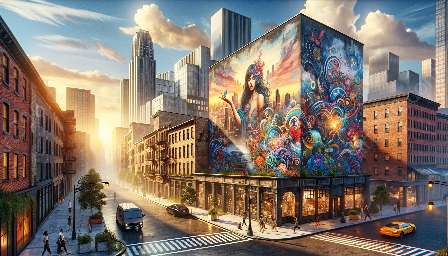Street art has evolved from being seen as mere vandalism to a form of artistic expression that captivates, inspires, and challenges societal norms. The psychological motivations and inspirations behind street artists' creations are complex and multifaceted, often stemming from a desire to communicate messages, provoke emotions, and reclaim public spaces.
Understanding the Psychological Motivations of Street Artists
Street artists often find themselves driven by a deep-rooted desire to express their thoughts, emotions, and experiences in a raw and unfiltered manner. This form of creative expression allows them to transcend traditional artistic boundaries and connect with people on a visceral level. The freedom and anonymity associated with street art provide artists with a platform to address societal issues, share personal narratives, and challenge the status quo.
Furthermore, the act of creating street art can be inherently rebellious, serving as a form of protest against oppressive systems or a means of reclaiming public spaces. The adrenaline rush and sense of liberation derived from clandestine art installations can be a powerful motivator for street artists, driving them to push the boundaries of conventional art and make their mark on the urban landscape.
Exploring the Inspirations Driving Street Artists' Creations
Street artists draw inspiration from a myriad of sources, ranging from their personal experiences and cultural heritage to global socio-political issues and urban environments. Their artworks serve as a reflection of the world around them, offering poignant commentary on themes such as inequality, environmental degradation, and the human condition.
The vibrant and diverse nature of urban spaces often influences the choice of subject matter and artistic styles adopted by street artists. The juxtaposition of dilapidated buildings and thriving communities, bustling street markets, and abandoned alleyways provides a rich tapestry of inspiration for artists to draw from. Additionally, street art has the power to revitalize neglected areas, infusing them with creativity and stimulating dialogue among inhabitants.
The Impact of Street Art on Society
Street art transcends traditional art galleries and museums, making artistic expression accessible to a wider audience. By occupying public spaces, street artists can effectively communicate with communities and prompt introspection, dialogue, and social change. The provocative and thought-provoking nature of street art challenges viewers to question their surroundings, sparking conversations about pressing issues and fostering a sense of collective identity within urban environments.
Moreover, street art has the potential to break down socio-economic barriers, offering a platform for marginalized voices and inspiring solidarity among diverse groups. The inclusive and democratic nature of street art allows for the democratization of art, empowering individuals to engage with and contribute to their local cultural landscape.
In conclusion, the psychological motivations and inspirations behind street artists' creations play a pivotal role in shaping the urban landscape and influencing societal perceptions. By delving into the deeper meanings behind street art, we gain a greater appreciation for the transformative power of artistic expression and the profound impact it has on our collective consciousness.

